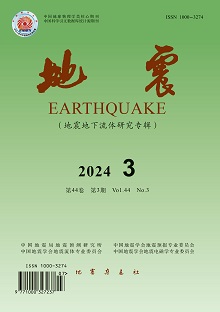Earthquake “doublets” – case studies for Kresna-Kroupnik (Bulgaria-M7.8) and Gaziantep–Kahramanmaraş (Turkey-M7.8)
Q4 Earth and Planetary Sciences
引用次数: 0
Abstract
The devastating earthquakes (M7.8 and M7.5) on 6th February 2023 demonstrate the power of the nature and weakness and fragility of the human society. Affecting more than 20 million people in Turkey, the death poll reaches about 60 000 deaths and about three times more injured, 120 000 buildings destroyed and more than 60 billion economical losses in Turkey and Syria. This tremendous seismic event at the same time gave the possibility to study and extract the lessons learned and to prevent heavy consequences when next similar event occurred. Following the context of the specific behavior of the seismic process this event can be attributed to the terminology using the word “doubles” of such a combination of two very strong earthquakes occurred in close space and time window – near Gaziantep and Kahramanmaraş. The two strong earthquakes of 6th February demonstrated all peculiarities of the seismic process and its geophysical, seismological and social consequences. The similar effects have been observed also in 1904 in Bulgaria. On 4th of April, 1904 two very strong earthquakes (M7.2 and M7.8) occurred in a very close time and space domain. These seismic events can also be classified as a “doublet”. So the comparative analysis of such strong earthquakes can help to understand better the seismic process and the following risks for the population, infrastructure and the affected countries as a whole. This paper is targeted to the comparison of the case studies to the seismic doublets in Bulgaria and Turkey and their peculiarities with a focus on the seismic process, destructions, negative social consequences and the specifics if they exist and to extract knowledge which can be useful for the prevention of all possible negatives. The results obtained suggest that similar seismic events might have very different geophysical, seismological and social consequences due to the resilience and environmental peculiarities of the specifically affected sites.双重地震"--Kresna-Kroupnik(保加利亚-M7.8)和 Gaziantep-Kahramanmaraş(土耳其-M7.8)案例研究
2023 年 2 月 6 日发生的毁灭性地震(M7.8 和 M7.5)显示了大自然的力量和人类社会的脆弱。土耳其有 2000 多万人受灾,死亡人数约为 60 000 人,受伤人数约为死亡人数的三倍,120 000 座建筑物被毁,土耳其和叙利亚的经济损失超过 600 亿美元。这次巨大的地震事件同时也为研究和总结经验教训提供了可能,以防止下次类似事件发生时造成严重后果。根据地震过程的特殊行为背景,这一事件可归因于在加济安泰普和卡赫拉曼马拉什附近,两个非常强烈的地震在很近的时间和空间发生的 "双重 "组合。 2 月 6 日的两次强烈地震显示了地震过程的所有特点及其地球物理、地震学和社会后果。1904 年,保加利亚也发生了类似的地震。1904 年 4 月 4 日,在非常接近的时间和空间范围内发生了两次非常强烈的地震(M7.2 和 M7.8)。这些地震事件也可归类为 "双地震"。因此,对此类强震进行比较分析有助于更好地了解地震过程以及随后对人口、基础设施和受灾国家整体造成的风险。 本文旨在对保加利亚和土耳其的双重地震及其特殊性进行案例研究比较,重点关注地震 过程、破坏、负面社会后果和具体情况(如果存在的话),并提取有助于预防所有可能的 负面影响的知识。 研究结果表明,由于具体受影响地点的抗灾能力和环境特殊性,类似的地震事件可能会产生截然不同的地球物理、地震学和社会后果。
本文章由计算机程序翻译,如有差异,请以英文原文为准。
求助全文
约1分钟内获得全文
求助全文
来源期刊

地震
Earth and Planetary Sciences-Geophysics
CiteScore
0.60
自引率
0.00%
发文量
3214
期刊介绍:
Earthquake is a comprehensive academic journal hosted by the China Earthquake Network Centre (CENC) and edited by Mr. Wang Haitao, Director of CENC and a senior researcher. The purpose of the journal is to exchange research results on earthquake observation, earthquake precursors and strong earthquake mechanism and prediction, and to promote the exploration and research on earthquake forecasting and the application of its results in earthquake prevention and disaster reduction. The readers are mainly earthquake scientists and technicians engaged in the research of earthquake observation and analysis, earthquake precursor exploration, earthquake mechanism and prediction, as well as scientists and technicians in related scientific and technological fields.
Inclusion:
The Chinese core periodicals in the general list of the core periodicals
Chinese Science Citation Database (CSCD) Source Journals
Scopus (Netherlands) Source Journals
Japan Science and Technology Literature Database (JST) source journals
 求助内容:
求助内容: 应助结果提醒方式:
应助结果提醒方式:


